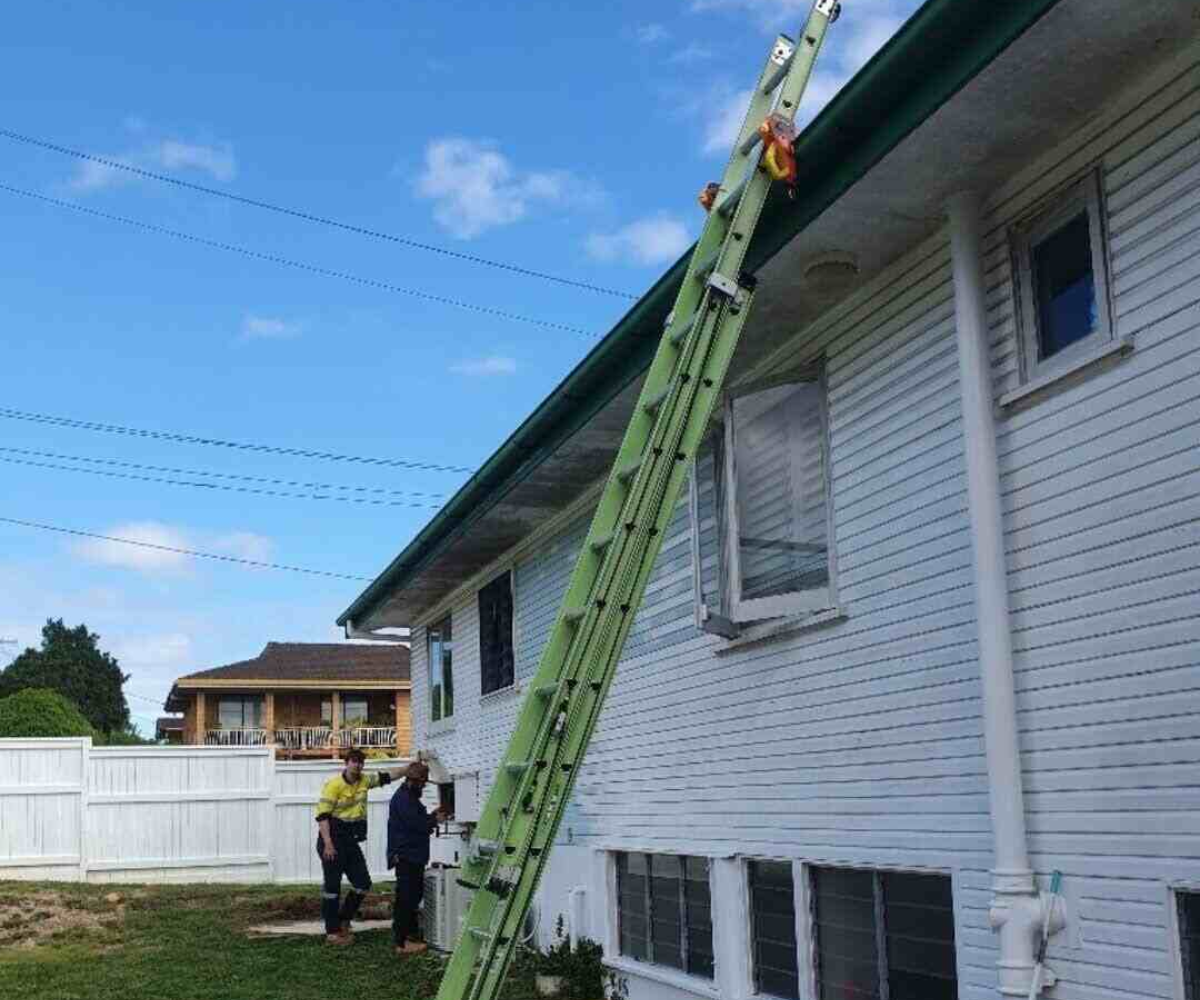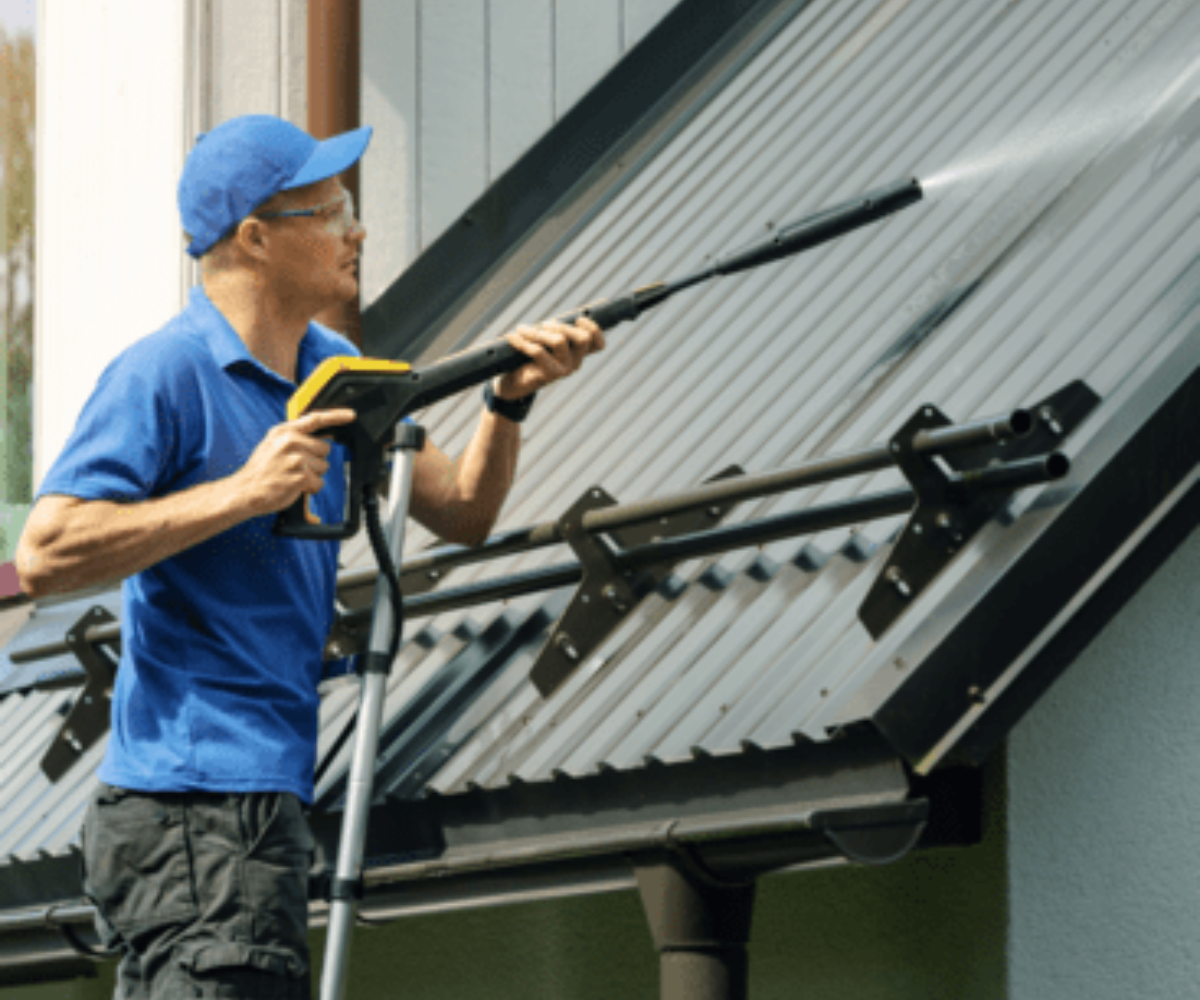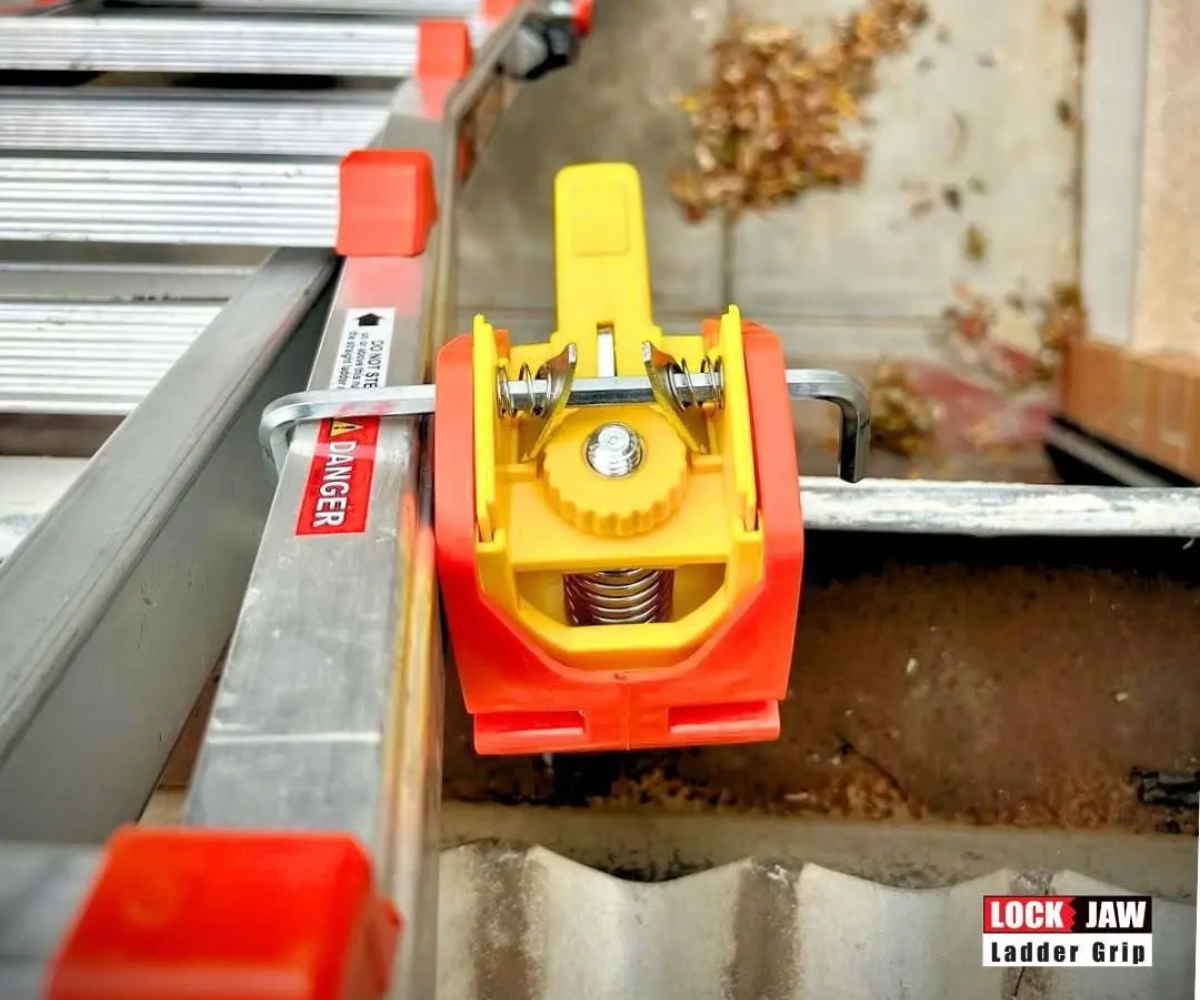Climb Confidently: Your Essential Guide to Safe Ladder Use

Ensuring safety when using a ladder starts with you. In this guide, we tackle the matter head-on: selecting a sturdy ladder, performing crucial pre-use inspections, and correctly setting it up for stability. Learn to navigate heights safely and confidently, with step-by-step advice that’s simple, but vital. A safe ladder means a safer you—let’s climb to that realization together.
- Selecting the right ladder for a task involves understanding its type, assessing the working load limit, and considering the correct height to prevent overreaching and maintain stability.
- Routine ladder inspection for damages and consideration of environmental factors is crucial before use, ensuring structural integrity and safety in various work conditions.
- Proper ladder setup and adherence to safety protocols, including the Three Points of Contact Rule and using tool belts, minimize risks and enhance efficiency during ladder use.
Determining the Most Suitable Ladder for Your Task

Selecting the ideal ladder for your job is a fundamental step in promoting safety in elevated electrical work. From A frame ladders to an extension ladder, each type serves different purposes and environments. The right ladder, such as a frame ladder, not only makes your work easier but also minimizes the risk of ladder falls.
But what are the steps to select the correct ladder, evaluate its working load rating limit, and determine its height, combined weight, and reach? Let us unravel this.
Recognizing the appropriate ladder involves comprehending the distinct features and safety aspects of various types. The A frame ladder, extension ladder, and platform ladder all serve different functions. For example, when working in areas with electrical hazards, it’s crucial to use non-conductive extension ladders to reduce the risk of electrical shock.
Bear in mind that the ideal ladder for the task is one that aligns with your particular needs and the optimal height of the ladder.
Assessing the Working Load Limit
The working load limit of a ladder indicates its maximum load capacity, which includes your weight and any tools or materials you carry. It is vital that the aggregate weight does not surpass the ladder’s working load limit, which aids in maintaining balance and working securely. Keep updated on australian standards before you use a ladder to ensure your ladders meet the requirements.
As you climb higher, remember that safety starts on the ground level, with a careful risk assessment of your ladder’s load rating.
Considering the Height and Reach
Choosing the right ladder height is crucial to prevent overreaching and maintain stability. Here are some guidelines to follow:
- The ladder should extend at least 3 feet over the roofline or work surface.
- Your maximum safe reaching height is approximately 4 feet higher than the height of the ladder.
- Remember the rule of thumb: for every four feet of ladder height, the base should be one foot away from the structure it leans against.
Prevent overreaching by ensuring the ladder is tall enough for you to comfortably reach your work area without standing on the top rung or step.
Pre-Use Ladder Inspection: Ensuring Integrity and Ladder Safety
Prior to utilizing a ladder, it is important to do a risk assessment to check it for potential damage to assure its structural integrity and safety. Loose rivets, splits in the stiles, or faulty safety components could pose significant safety risks. Additionally, environmental factors like weather conditions, electrical hazards and surrounding hazards should be evaluated to ensure a safe working environment.
A comprehensive pre-use inspection plays a significant role in avoiding accidents and maintaining ladder safety.
Examining your ladder for potential harm is an integral component of ladder safety. Look out for:
- Missing or loose steps, rungs, and non-slip feet
- Loose nails, screws, bolts, or nuts
- Rot, decay, warping in wooden ladders
- Cracks in fiberglass ladders
- Twisted or distorted rails
- Any other potential damage
For electrical work, always choose ladders made of non-conductive building materials to reduce the risk of electrical shock.
Environmental factors can significantly impact ladder safety. Weather conditions such as wind, rain, and electrical storms pose risks, and the presence of electrical power lines, or wiring in the ladder’s surrounding area is an important consideration to prevent electrocution hazards.
Before climbing, always evaluate both the weather conditions and risks in the surrounding area to ensure a safe working environment.
Setting Up Your Extension Ladder Safely

Correctly setting up your ladder is an essential element of ladder usage and is often a prevalent contributor to ladder falls. Correct ladder setup includes:
- Following the four-to-one rule for your straight and extension ladders
- Securing the ladder at both the top and bottom
- Setting up the ladder on a flat and stable surface
- Avoiding positioning ladders near hazards or unsuitable surfaces
- Ensuring the surrounding area is clear of obstructions.
A ladder should only be utilized when it is positioned on a flat, stable surface. Uneven or unstable surfaces can cause the ladder to tip over, leading to accidents. If a perfectly flat surface is not available, use stabilizers and anti-slip devices, such as anti-slip gutter guards, to ensure stability.
Remember, a stable ladder starts with a stable surface.
When setting up your ladder, always:
- Avoid power lines and other potential hazards
- Position the ladder where it can’t be affected by doors opening or closing
- Be aware of other workers and avoid being bumped
These precautions can help prevent accidents when using an extension ladder or an insulated ladder as the ladder extends.
The key to safe ladder use is not just about climbing correctly, but also about positioning away from hazards.
The Three Points of Contact Rule

One of the key principles of ladder safety is the rule of three points of contact. This means that when using a ladder, you should always have at least three points of contact, such as two hands and one foot, or two feet and one hand, to ensure stability and safety. This rule is essential for preventing loss of balance and falls, and ensuring ladder safety.
So, how do we preserve these three points of contact while ascending and working? Let’s investigate that further.
Climbing with Care
When climbing a ladder, remember to always face the ladder to maintain balance and a secure grip. This rule applies to descending as well. If you need to carry items during ascent or descent, ensure they are small enough to allow for three points of contact to be maintained at all times.
Climbing with care is not just about ladder safety, but also about efficiency and comfort.
Staying Centered and Balanced
Keeping your body centered between the side rails of the ladder is key to maintaining balance and stability. Leaning too far to one side can disrupt the ladder’s balance, increasing the risk of a fall. Overreaching or leaning sideways beyond the ladder rails is dangerous and should be avoided. Remember, staying centered and balanced is just as important as maintaining three points of contact.
Ladder Use Protocols: Minimizing Risks While Working

Prioritizing a one-person-at-a-time policy and the utilization of tool belts for transporting tools are fundamental aspects of ladder safety protocols. Using a tool belt allows workers to keep their hands free for stability and reduces the risk of falls. Following these protocols not only minimizes risks while working but also enhances efficiency through safe use. Ensure those who use a ladder are physically capable.
So, what about securely managing tools and materials, and preserving safe practices while on the ladder? Let’s delve into this.
Secure Handling of Tools and Materials
Handling tools and materials securely is crucial when using a ladder to repair structural damage. Here are some tips to keep in mind:
- Use a tool belt or appropriate carrying devices to keep your hands free for stability.
- When carrying items up or down a ladder, ensure they are small enough to allow for three points of contact to be maintained at all times and remain facing the ladder.
- Remember, large or heavy items should not be taken up or down a ladder.
Maintaining Safe Practices
While on a ladder, maintaining safe practices is as important as setting it up safely. Users should stay at the right height and not climb or work past the second-last rung to decrease the risk of overbalancing and falling. Always facing the ladder while climbing or descending is another safety practice to ensure. A frame ladders are the preferred ladders to use when there will be difficulty in leaning against a stable surface.
Portable ladders are statistically the most likely ladder to be fallen from. Always execute extreme care, and utilize stabilizing tools. Do not climb a portable ladder if there is only one person present, keep the body centered and remain facing the ladder.
After all, safety on ladders is not just a set of rules, but a mindset.
When to Opt for Alternatives to Ladders
While ladders are useful tools for straightforward tasks of brief duration, they may not always be the ideal choice. When the job is complex, requires multiple points of contact, or involves reaching out at an angle, alternatives like scaffolding, an elevated work platform, or a platform ladder might be safer and more efficient. Also, consider your physical capabilities and training needs.
Let’s investigate the evaluation of job duration and complexity and the risk assessment of physical capability and training requirements.
Evaluating the Job Duration and Complexity
Evaluating your job’s complexity and duration is necessary to determine if using a ladder is the appropriate tool for safe operation. Ladders are most suited for simple access jobs of short duration. When a job involves reaching out at an angle or positioning that compromises safety, it is too complex for a ladder.
Also, a task duration that could lead to fatigue and prevent your workers from remaining physically capable suggests that a ladder might not be the safest equipment choice. For such tasks, alternative solutions such as scaffolding or an elevated work platform are recommended.
Assessing Physical Capability and Training Needs
Using a ladder requires certain physical capabilities to ensure safe use and effective operation of ladders. Key physical abilities necessary for ladder use include balance, coordination, and strength.
Also, individuals setting up or using portable ladders should be trained or supervised by a competent person to use portable ladders safely. Remember, it’s not just about having the right ladder, but also about having the right skills and physical capability.
Ladder Maintenance and Care
Similar to any other tool, ladders necessitate consistent maintenance and care for their durability and safety. Frequently checking your ladders for any damage or potential issues is crucial to ensure safe use. Also, consider the type of environment in which a ladder has been used, as exposure to damaging substances like acids can affect its condition. All ladders should comply with standards.
Let’s investigate routine checks and maintenance activities, as well as suitable storage solutions.
Routine Checks and Maintenance
Regularly inspecting your ladder keeps it in good condition and fit for use. Here are some maintenance actions to take:
- Portable ladders should be inspected prior to use.
- Check ladders for corrosion, rust, oxidation, and excessive wear, especially on treads.
- Ensure that pulleys are lubricated with all moving parts operating without excess play or bending.
By following these steps, it will help ensure that your ladder is safe to use.
Keep in mind that just as you maintain your tools, your ladder warrants the same level of care and upkeep.
Proper Storage Solutions
Storing your ladder properly can prevent damage and ensure its longevity. Warping or sagging, which can compromise ladder integrity and safety over time, can be prevented by proper storage.
When storing ladders in a horizontal position, support the ladder at ground level at various points along its length to preserve its shape and functionality. In the end, a properly stored ladder is equivalent to a well-maintained ladder.
Summary
In conclusion, ladder safety is a comprehensive process, encompassing the selection of the right ladder, pre-use inspection, appropriate setup, adherence to the three points of contact rule, following safe ladder use protocols, and regular maintenance and care. Each step is crucial in minimizing risks and ensuring safety.
However, remember that ladders aren’t always the only option or the best tool for the job. Evaluate the task’s complexity and duration, and your physical capabilities and training needs to decide whether alternatives to ladders like scaffolding or an elevated work platform would be safer and more efficient. Ultimately, your safety is paramount, and understanding how to use ladders safely is a skill worth mastering.
Frequently Asked Questions
What are the three points of contact rule?
To ensure your ladders are stable, the three points of contact rule requires maintaining either two hands and one foot, or two feet and one hand on the ladder at any given time.
How often should I inspect my ladder?
Inspect your portable ladders regularly to ensure safety and compliance with regulations.
What should I do if my ladder is damaged?
You should repair or replace a ladder with defects before using it to ensure safety.
When should I consider alternatives to ladders?
You should consider alternatives to ladders for complex jobs, tasks of long duration, or if you lack the necessary physical capabilities or training. It’s important to prioritize safety and efficiency in these situations.
How should I store my ladders?
Store your ladders horizontally with support at multiple points along its length to prevent warping or sagging. This will help maintain its shape and integrity.



